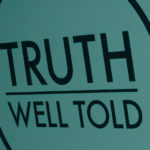June Steward previously wrote about the challenges of effectively motivating donors to give while fully respecting the dignity of those donors who wish to help, and without promoting a sense of “white saviourism.” (See Worried about “donor as hero” fundraising? Here’s another way to think about it.) In this post, June looks at focusing fundraising on the identity of the donor as a solution.
Content Warning: this post contains examples of fundraising that address child sex trafficking.
Most fundraisers are concerned with the “why” donors give – their motivations, values and beliefs.
Philanthropic psychology looks at it differently. It is concerned with the “who” of giving – who are your donors when they give to your charity?
In traditional direct-response fundraising, the identity we have assigned donors is “donor as hero.” This is often successful, but it’s far from the only identity available to us. With the following suggestions, based on philanthropy and psychology research, I’m exploring the use of alternatives to the “donor as hero” identity.
Every donor has many potential identities that could influence their giving:
- Personal identity – a smart or caring person.
- Relational identity – such as a mother, brother, husband.
- Organisational identity – relationship to an organisation, such as donor, member, volunteer, advocate, ambassador, staff member, etc.
- Group identity – relationship to groups, such as sports teams, churches.
- Social identity – such as gender, race, political alignment.
- Regional, national, international identities – related to their origins or where they live.
- Religious identity – related to religious beliefs, affiliations, or origins such as Christian, Muslim, Jewish.
Here’s an example. The following appeal relies mainly on the “donor as hero” identity. Because the audience is made up of many older, deeply committed Christian women, it uses both relational identity (blue text) and religious identity (green text).
Original Appeal
“When there was no food, I used to pray to the Lord
|
When you put the relational and religious identities together, it’s very powerful. Many donors are parents who pray for their children. Even if their problems are different to Mere’s, they have this shared experience.
I tried to include experiences and fears that were common to all parents– the fear of not being able to provide, the cost of doctors, worry about their children being shamed at school. The copy also shows how Mere loves her children.
By giving, the donor helps Mere to express that love while also expressing their own love for someone in need.
The question is this: Are these donor identities strong enough to carry the appeal if we remove or soften the “donor as hero” aspects? If relational and religious identities are the primary identities influencing the giving decision, the answer should be yes.
Below is a rewritten version of this example where we strengthen the religious and relational identities within the copy.
Rewritten Appeal
“When there was no food, I used to pray to the Lord
|
Here are the things that have changed:
1. Donors’ moral identity traits reflected in donor AND participant.
In this example, the red text highlights the moral identity traits of the donor. We’ve also tried to make a stronger connection between the donor and Mere by using these moral traits to describe her as a “loving” and “hardworking” mum.
2. Religious identity expression also as a group identity.
With the green text, we’ve tried to significantly strengthen the expression of religious identity. One way we did this was by positioning the donor as part of the body of Christ. This is well-known language within Christian circles. Note this also helps increase donor wellbeing through connection to their faith.
It also means the donor is no longer the lone “saviour” to all of Mere’s problems. In fact, here the donor and Mere are both part of the same body of Christ. The donor is asked not to be the saviour but to help a fellow sister in Christ.
They have equality of identity within the body of Christ, even if they don’t have equality of material resources.
3. Stronger relational identity and wellbeing.
With the blue text, we’ve tried to strengthen the donor’s relational identity as a mum or parent. And in the section outlining common parenting experience, we’ve also coupled negative statements with positive ones to boost donor wellbeing.
This has the effect of giving the donor more feelings of autonomy and competence. We couple the emotional sadness of Mere’s plight with the ideas of “power,” “security,” and being “hardworking” as well as the moral identity traits of “kindness,” “compassion,” and “generosity.”
This also shifts the power dynamic in the copy of “Mere in urgent need and waiting for help” to “Mere in urgent need and determined to give her children a better future.” This makes her a more active participant in the process of fighting poverty.
Traditionally, the urgency of “waiting for help” is a strong driver for giving – but possibly undermines Mere’s human agency. We try to offset the loss of that motivator by using donor identity and wellbeing principles. In this case, we make a stronger connection with Mere as a mother and a stronger sense of being part of a community through the body of Christ.
Shared power through donor identities
I don’t think it’s possible to completely remove the “donor as hero” dynamic from the fundraising narrative. Not unless we cut the donor completely out of the picture. But I don’t think that would be workable to raise funds.
However, by using alternative donor identities and wellbeing principles, it’s possible to still be donor-focused while overcoming the problematic saviourist power dynamic.
I’ve been involved in many discussions over the question of whether “donor as hero” narratives strip beneficiaries of their agency. Often, the solution presented makes the fundraising narrative all about the program participant or the charity’s workers with the donor sidelined. That is proven (in many tests) to be weak fundraising.
Here are three alternatives where we can use donor identities to share power or agency. Rather than agency resting with the donor or the participant, it can be both.
1. The donor’s identity is expressed as a collective supporter of your charity.
Here, we try using a collective identity instead of “donor as hero.” We use messages incorporating the donor’s identity as part of your charity’s team. Ideally, the team has a vision that inspires them or moral identity traits they wish to emulate. That way, agency is shared between the donor, the participants and/or the charity. Here’s one example:
|
Your commitment and compassion |
In this case, the donor is not the sole “saviour,” but shares agency with the hospital’s medical team. They’re also part of a team that has moral identity traits they aspire to. Most donors can’t be doctors or nurses without training – but they can still be caring like the doctors and nurses they admire.
2. The donor’s identity is expressed as part of the participant’s support network.
This is another form of collective identity. Here’s an example.
|
I know your love and commitment to people living in poverty. I know you’re passionate about helping girls like Eunice who face marginalisation or the risk of child marriage. This stops hardworking girls like her from following their dreams. For Eunice, this means her long-held desire to become a nurse may die out. But with your care and compassion, you become a key part of Eunice’s Tertiary Care Team. Along with the field staff, her teachers and her family, you become a vital part of Eunice’s extended family. Together, you’ll all help support her, mentor her, pray for her… giving her a chance to fulfil her dreams! |
Here the donor shares agency with all the people involved in helping to fight poverty. Also, the donor is positioned not only as a member of a team but as part of Eunice’s extended family. This boosts the donor’s wellbeing through stronger feelings of connection between not only the donor and Eunice but also the donor and Eunice’s own family.
4. Developing shared identities.
Here we develop specific donor identities that can be shared with the participant and/or the charity.
For example, if you know a majority of your donors see themselves as people who care about standing up against poverty, you could develop a donor identity as a Poverty Fighter or a Justice Defender.
Or if you know your donors are passionate about helping vulnerable girls, you could try a donor identity as a Girl Champion. Below is a rewritten version of our earlier sample featuring Jamila.
|
“They locked me a room until a man would come…” Dear <FIRSTNAME> What does it mean for you to be a Girl Champion? It means you can give a girl the power to fight back. To fight back against sex slavery. To fight back against those who want to exploit girls as young as 5. To fight back against the poverty that forces a family to sell their daughter into a brothel. So a girl like Jamila can become a Girl Champion herself. Because can you imagine being so desperate as a parent? You don’t want to sell your child but you can’t feed all four of your children. So you feel you have no choice… especially when the broker tells you he can find a good job for your daughter. Jamila says: “The broker said I could earn a lot of money with a nice family. But he didn’t take me to a home where I could be a maid. It was a place with a lot of other girls. They locked me in a room and only opened the door when a man wanted me.” Like Jamila, I’m sure you’ll agree that no girl should be forced into sex slavery. Will you respond to her call to fight for the rights of girls to grow up free from exploitation? Because that’s what Girl Champions do! Your compassion with a monthly gift of $50 makes you a Girl Champion! It means you help fight against child sex slavery for precious children like Jamila. She was strong enough to survive sex slavery… now your generosity helps girls like her to heal from trauma and develop a livelihood. Today Jamila is one of our very own Girl Champions, actively working to stop other girls from becoming child sex slaves. |
Here the donor identity as a Girl Champion is one that can be shared with the participant. Jamila herself has power and agency to not only recover from sex exploitation but also be a Girl Champion herself for others going through the same trauma. For the donor, feelings of autonomy and competence should also go up at the prospect of being a Girl Champion.
Test and test again
As a fundraiser, philanthropic psychology gives you a wide array of alternative donor identities to use besides “donor as hero.”
But while the general principles of philanthropic psychology have been tried and tested, as yet there have been no direct tests I know of which test a “donor as hero” primary narrative against “donor as alternative identity.” As mentioned earlier, I am in discussions with a couple of charities interested in running these tests. (If you would like to run such a test, please contact me!)
I urge fundraisers to test these principles and see whether they work for you.
But one note of caution. You can’t simply assign or make up a donor identity. This must be based on what the donor tells you about their view of who they are (actual identity) and who they want to be (ideal identity).
This means you need to know your donors well. If you don’t know them, you need to ask them.
For more information on donor identities, see these articles:
The primary origin of connecting with donors through their identity comes from the Institute for Sustainable Philanthropy, where you can learn more and take advanced courses.
June Steward is a fundraising writer in Australia. She publishes the popular June’s Fundraising Letter.
Join the conversation and equip yourself to do the best fundraising you can do. Join The Fundraisingology Lab by Moceanic. You’ll get the tools, the information, and the supporting community that will take you to new places in your fundraising career. Check it out!
Related Blog Posts:










